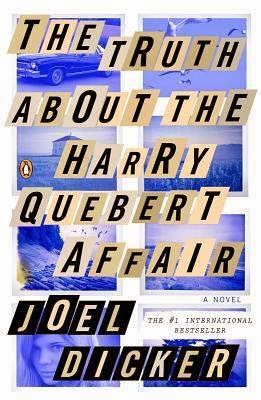 Summary from Goodreads:
Once a century, one person is chosen for greatness.
Summary from Goodreads:
Once a century, one person is chosen for greatness.
Elisa is the chosen one.
But she is also the younger of two princesses, the one who has never done anything remarkable. She can't see how she ever will.
Now, on her sixteenth birthday, she has become the secret wife of a handsome and worldly king—a king whose country is in turmoil. A king who needs the chosen one, not a failure of a princess.
And he's not the only one who seeks her. Savage enemies seething with dark magic are hunting her. A daring, determined revolutionary thinks she could be his people's savior. And he looks at her in a way that no man has ever looked at her before. Soon it is not just her life, but her very heart that is at stake.
Elisa could be everything to those who need her most. If the prophecy is fulfilled. If she finds the power deep within herself. If she doesn’t die young.
Most of the chosen do.

I decided to wait and read Rae Carson's Fire and Thorns trilogy until after the last book had come out. I'm glad I did because these read very, very fast. Now, this
is a Chosen One concept. Elisa has been blessed by God and chosen as a Bearer - a blue jewel appeared in her navel when she was a baby, marking her for service. The issue, as evidenced in
The Girl of Fire and Thorns, is that Elisa has
no idea what she is supposed to do as a Bearer. She's been protected and coccooned her entire life but she has no special talent (beyond reading), no particular beauty (she's overweight, darker/olive complected, and eats her feelings), and isn't even the heir to her father's kingdom (her beautiful, fair-skinned, blonde sister will inherit). So Elisa is married off at sixteen to the ruler of the neighboring kingdom, Alejandro, who is older by a decade or more and widowed with a young son.
And this is where things get strange. Elisa asks Alejandro not to consummate their marriage and he agrees. The party is attacked on the way to Orovalle and one of Elisa's trusted confidantes dies. When they arrive in Orovalle, Alejandro prefers to hide his marriage and instead introduces Elisa as a special guest. Alejandro has a mistress (no surprise there). Then Elisa gets kidnapped....and that's just
The Girl of Fire and Thorns.
This proves to be Elisa's opportunity for growth. She must learn to be self-sufficient, to not feel sorry for herself for being clueless about her gift, to learn the real history of the bearers, and to truly understand the political mess that is the conflict between Orovalle and Invierne. Elisa learns to lead and it sets the tone for the rest of the series.
The Crown of Embers picks up as Elisa is trying to put her kingdom back together;
The Bitter Kingdom delves even further into the history of conflict with Invierne as traitors undermine Elisa's efforts to keep her loved ones safe.

Carson does a lot of interesting things with this series. It borrows off of the medieval history of Spain, which is a different source than a lot of the northern European sources, and also off some of the early Catholic mysticism. If you speak Spanish or Latin, you'll get a lot of the phrases Carson uses in places. The religious angle is really interesting and brings up a lot of questions of faith and trust. Even though this is a YA series, and has a really strong romance element, Carson handles Elisa's three attachments - Alejandro, Humberto, Hector - without sticking anyone in a romantic triangle (pentagon?). When it is clear where Elisa's heart lies, Carson goes one step further by having her teenage character make a really smart choice and
proactively choose to use birth control. Even though the couple doesn't actually have sex until almost at the end of book three when they are more-or-less married (which isn't really a spoiler because, come on, true love did have to win out at the end) it was really nice to see a YA character make a smart choice with both heart and head.
This is a fun, well-built fantasy world and a series with great plotting. A definite recommend for readers looking for solid fantasy elements and a strong female character/narrator.
 Summary from Goodreads:
Summary from Goodreads:








